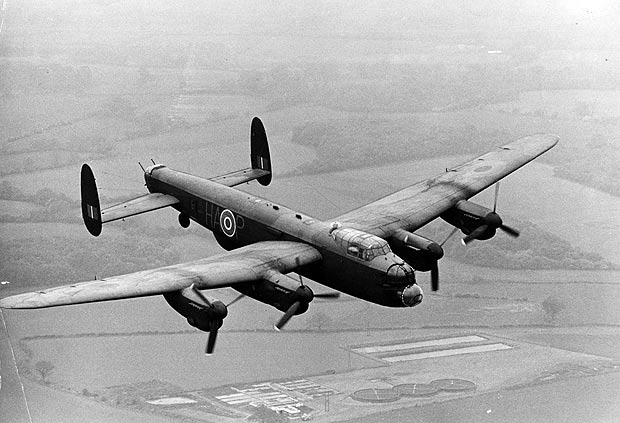69 years after a Lancaster Bomber crashed during WWII in Germany, remains of the five-member crew inside the wreckage of the plane have finally been discovered in a village near Frankfurt.
In 1943, Lancaster ED427 had been on its way back to base at RAF Fiskerton, Lincs, after a bombing raid in Czechoslovakia when it was shot down by German anti-aircraft guns.
After nearly 70 years, Uwe Benkel, a health insurance clerk and amateur historian, felt he had to find the remains of the missing men to bring closure to their families, who knew nothing of what had happened to their loved ones. To date, Mr. Benkel and his voluntary recovery group has investigated 400 crashes and found the remains of 38 airmen.
Mr. Benkel began examining this crash in 2012 and found an eyewitness. Peter Menges, now 83, had seen the plane go down outside the village of Laumersheim. The impact of the crash had created an explosion and left a large crater on the ground.
At the time, the German military had recovered and buried the bodies of two of the airmen, Sergeant Cope and Canadian Pilot Officer Watt. The crater was soon covered with dirt and rocks, and the wreckage was lost from sight.
When the war ended, the British Air Ministry tried to investigate but couldn’t find the remains of the plane. The plane was assumed to have lost over the North Sea, and the names of the missing airmen were added to the Runnymede Memorial in Surrey, which is dedicated to servicemen without a known grave.
On Mr. Menges’ direction, Mr. Benkel used radar photos and metal detectors to locate the crash site. They dug a 5-metre deep hole within an area of 100 square metres and finally found what they were looking for.
The dig uncovered parts of the fuselage, the cockpit, landing gear, a tyre, a burnt parachute, some tools and ammunition, and, of course, remains of the five lost airmen—First Officer Bone, Sergeant Foster, Sergeant Yelland, Sergeant Rooney, and Sergeant White. The remains were in the form of “hundreds” of fragments of bones recovered from inside the cockpit.
Many local residents were against the dig. Mr. Benkel elaborated, “A lot of people couldn’t understand what we were doing and said things like why were we digging up British airmen who bombed our cities and killed our people?
“Our view is that this is past and history, it was 70 years ago. We are another generation. We do research on missing men who are still in the ground. It doesn’t make a difference if they are German or British; they were young men who fought and died for their country for which they deserve a proper burial in a cemetery, The Telegraph reports.
“We do it for the families. For them, it is a bit like reading a book with the last page missing. When we find the bodies, we are writing the final page for them.”
Hazel Snedker, daughter of Sergeant Foster, was only three when her father had gone missing. Now 72, she remembers how her mother had fainted on hearing the news of her father’s disappearance. “It is a great relief to know what did happen to him and where he is. At least he will now have a grave with a headstone,” Mrs. Snedker said.
